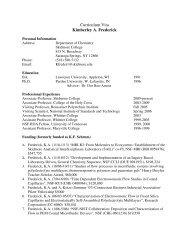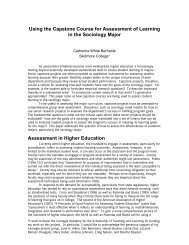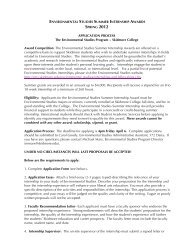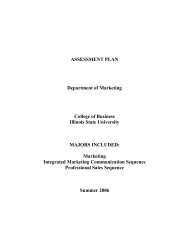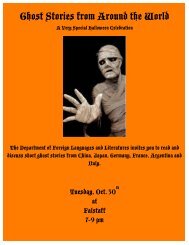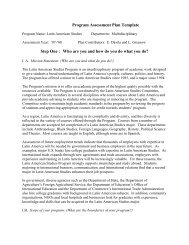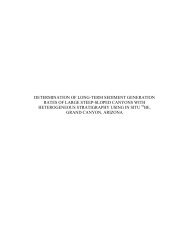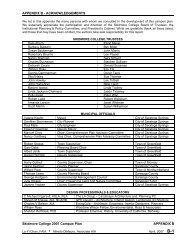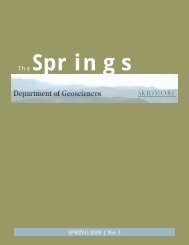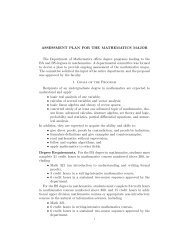Example 2 - Skidmore College
Example 2 - Skidmore College
Example 2 - Skidmore College
Create successful ePaper yourself
Turn your PDF publications into a flip-book with our unique Google optimized e-Paper software.
a surficial system (Ritter et al., 1978). Since soil development is related to surficial<br />
processes, soils provide a context (or constraints) to produce quantitative piedmont-<br />
process models based cosmogenic nuclides.<br />
Cosmogenic nuclide data offers many insights to landscape evolution over the 10 3<br />
to 10 5 year time scale (Bierman, 1994). The rates at which nuclide bearing sediments are<br />
produced in drainage basins that move along desert surfaces, such as piedmonts,<br />
determines the nuclide activity within sediments upon final deposition. Most cosmogenic<br />
nuclide studies measure activities in rock to determine exposure age (Nichols et al., In<br />
prep) and bedrock erosion rates (Clapp et al., 2002). Recent studies have measured<br />
nuclide activity in sediment to determine drainage basin-wide erosion rates (Clapp et al,<br />
2001, 2002). Applying this technique to the Kofa Mountain Piedmont includes not only<br />
the sediment generation history, but also the transportation history across the piedmont to<br />
the pit location. In drainage basins, the abundance of cosmogenic nuclides in sediment<br />
exiting a basin is inversely related to the rate at which the basin is eroding (Bierman and<br />
Steig 1996), thus high erosion rates have low nuclide activities.<br />
Cosmogenic nuclide activity is used to create models of erosion rates along<br />
piedmonts and throughout drainage basins (Bierman and Steig, 1996, Nichols et al.<br />
2002). As sediment exits the basins the nuclide activity in alluvial sediments increases as<br />
the sediment is transported down the piedmont and away from the mountain (Nichols et<br />
al. 2002). After deposition, continued production of nuclides creates a unique nuclide<br />
signature at depth that can be modeled to estimate the depositional history of the<br />
piedmont (Nichols et al., 2002, Phillips et al., 1998, Perg et al., 2001, Anderson et al.,<br />
1996).<br />
6



